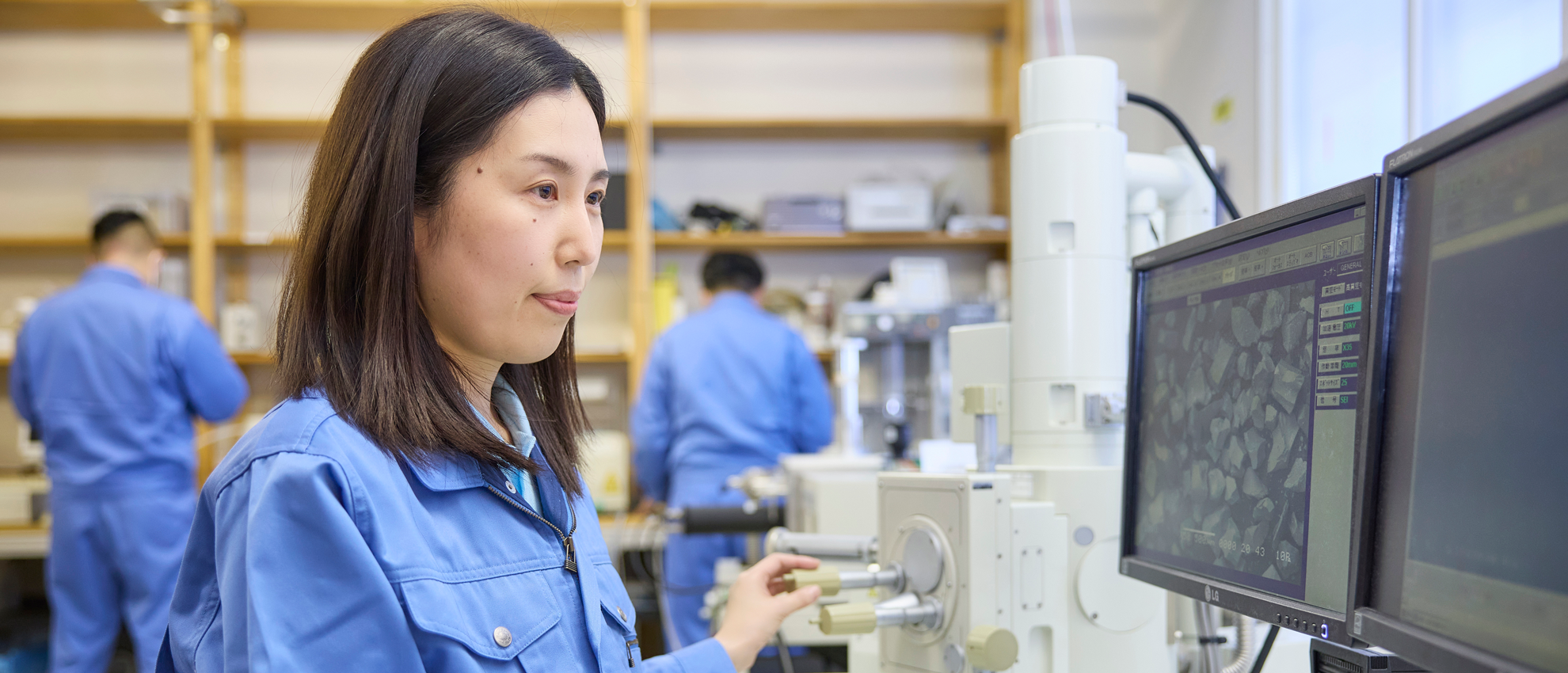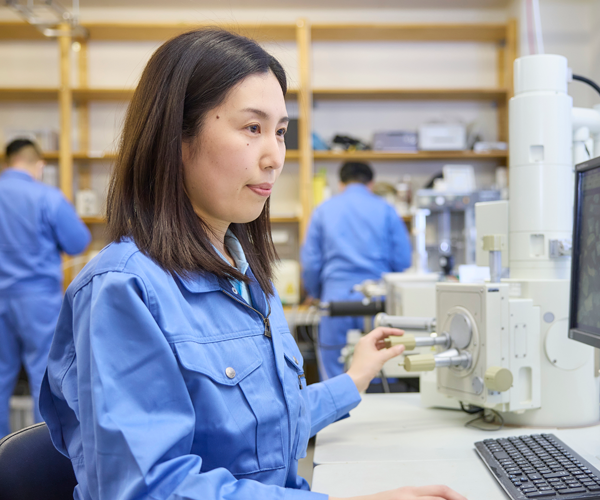

Products
Our technology
Strength increase of Quartz Crucible
If the silica glass crucible is deformed while the single crystal silicon is pulled up, it touches the single crystal silicon, and the pulling may be discontinued.




Diagram. Deformation of Silica glass crucible (Example: Inward deformation of the crucible wall)
The deformations of silica glass crucible change depending on (1) viscosity of quartz glass, and (2) surface state of silica glass crucible.
①Beam-Bending Method
A quadrangular prism sample is taken from the glass body (crucible) made from melting the raw material quartz powder.
The taken sample is set on the device as shown in the diagram below.
A carbon heater that can heat the sample is installed in the device.
After reaching the target temperature, stress is placed on the middle area of the sample, and the deflection velocity is measured in the middle.
From these measurement results, as well as the following items measured before heating, the viscosity of the glass is calculated.


Diagram:Beam-Bending Method


Diagram. Viscosity of silica glass
One advantage of synthetic silica glass is that it has fewer impurities than natural silica glass(※1)However, one disadvantage, as shown in the above diagram, is that the viscosity is lower.
Normally, the structure of silica glass crucible is formed with 2 layers. Synthetic silica glass with high purity is filled in the inside which touches silicon melt, and natural silica glass with high viscosity is filled in the outside with the objective of controlling the deformations in the crucibles.
Normally, if there are few impurities, the yield rate and the quality of the single crystal silicon pulled up using the silica glass crucible are improved.


Diagram. Cross-section structure of silica glass crucible
②Surface state of silica glass crucible
When the single crystal silicon is pulled up, the silica glass crucible is exposed to high temperatures of 1,500℃.
The surface state of the silica glass crucible before heating is silica glass. However, if it is exposed to this temperature range for long periods of time, the surface of the silica glass crucible (silica glass) changes to the stable structure, β-Cristobalite (crystallization)
If the surface of the silica glass crucible crystallizes, the mechanical strength of the silica glass crucible improves, and the deformations of the silica glass crucible can be suppressed.
In the picture below, the results of comparing the Intermediate deflection velocity of the sample with a silica glass surface, and the sample with a crystallized surface, are shown. The crystalline layer greatly reduces the deformation speed.
The Intermediate deflection velocity slows down as the crystalline layer becomes thicker, and if the crystallinelayer has 130 μm or more, it slows down to a speed where there are no substantial problems.
A sample with pressure applied to the middle area after the target temperature is reached (surface: silica glass)
A sample preserved at a temperature that doesn’t cause deformation, and that had pressure applied in the middle after the surface has been crystallized (surface: crystal)



Diagram. Deformation when pressure is place on the middle of sample with the Beam-Bending Method (temperature: 1,500℃)
(a) Surface: silica glass
(b) Surface: crystalline layer


Diagram. Relationship between thickness of crystalline layer and Intermediate deflection velocity
Silica glass crystallization is changed depending on the concentration of impurities in the silica glass, OH group concentration, and the state of irregularities on the surface.
In pulling up in harsh temperature conditions, a silica glass crucible where the crystallization of external surface is further accelerated is used.

